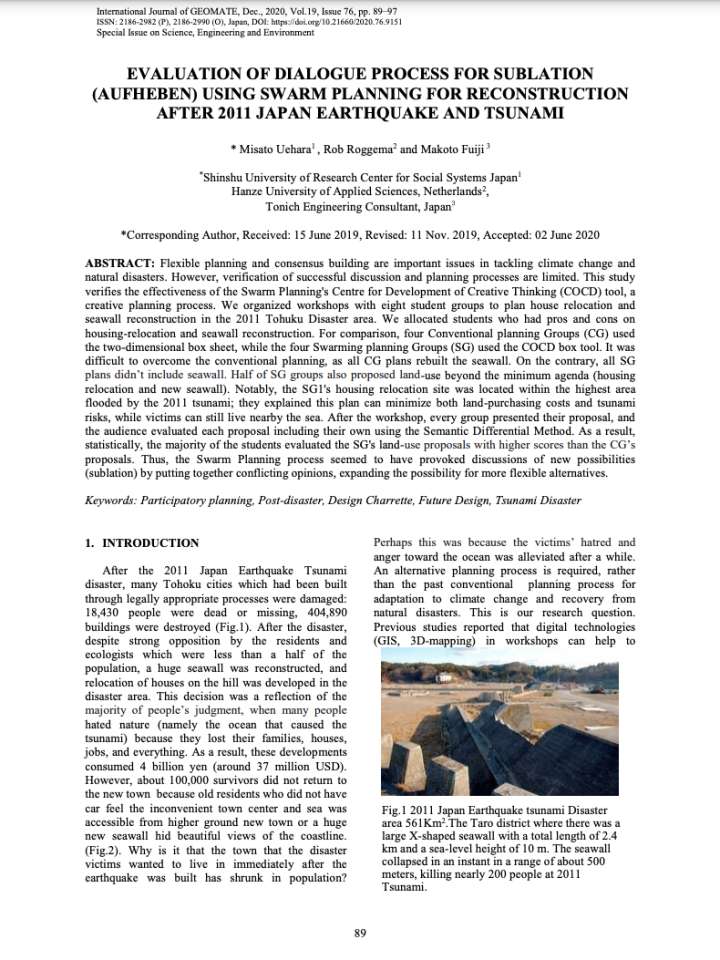Evaluation of dialogue process for sublation using swarm planning for reconstruction after 2011 Japan Earthquake and Tsunami
This study verifies the effectiveness of the Swarm Planning's Centre for Development of Creative Thinking (COCD) tool, a creative planning process. Researchers organized workshops with eight student groups to plan house relocation and seawall reconstruction in the 2011 Tohuku Disaster area. Students were allocated who had pros and cons on housing-relocation and seawall reconstruction. For comparison, four Conventional planning Groups (CG) used the two-dimensional box sheet, while the four Swarming planning Groups (SG) used the COCD box tool.
Notably, the SG1's housing relocation site was located within the highest area flooded by the 2011 tsunami; the group explained this plan can minimize both land-purchasing costs and tsunami risks, while victims can still live nearby the sea. After the workshop, every group presented their proposal, and the audience evaluated each proposal including their own using the Semantic Differential Method. As a result, statistically, the majority of the students evaluated the SG's land-use proposals with higher scores than the CG’s proposals. Thus, the Swarm Planning process seemed to have provoked discussions of new possibilities (sublation) by putting together conflicting opinions, expanding the possibility for more flexible alternatives.
Explore further
